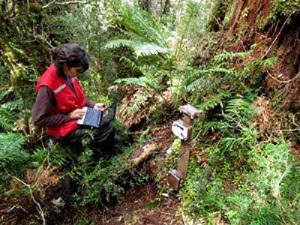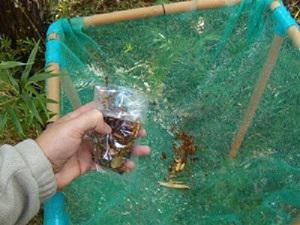Rocio Beatriz Urrutia Jalabert
This project aims to assess the primary productivity of endangered Alerce forests in southern Chile and the main environmental factors that drive this productivity. The project also emphasizes the education of children on this species.

Fitzroya cupressoides ((Molina) Johnston) or Alerce is one of the most outstanding species of the temperate rainforests of southern South America, because of its beauty, scientific, cultural and historical relevance. It is also endemic and one of the longest-lived trees in the world. Alerce has suffered a long history of exploitation since European colonization began in the sixteenth century; therefore, it is currently listed as endangered in the IUCN Red list of threatened species and enjoys national legal protection. Despite its protection, Alerce remains threatened by illegal logging and intentional fires, among other factors. In addition, this species is not sufficiently prized in rural communities beyond its timber value. Besides these drawbacks, we have an extremely limited comprehension of its vulnerability to anticipated climate change because of gaps in ecological knowledge.

This project will provide the first long-term comprehensive net primary productivity (NPP) assessment for Alerce forests growing in the Coastal and Andes mountain ranges (Alerce Costero and Alerce Andino National Parks), and a crucial understanding of the main environmental factors that drive their productivity. NPP (above- and belowground components) will be assessed in two 0.6 ha permanent plots in each study area.
Currently, there is little understanding of these environmental factors and it is therefore not possible to evaluate the forests future vulnerability to climate change. A special focus will be placed on evaluating and understanding the main climatic drivers of Alerce radial growth in both Ranges. In addition to the advances in ecological research, this work aims to educate small children from rural areas associated to the historical exploitation of Alerce, about the main ecological features and the importance of this species beyond its value as wood.
This whole project seeks to provide a more solid scientific basis for efforts to protect this species in the context of anticipated climate change and to infuse respect and admiration for this species among children that live close to Alerce forests. This will be crucial to lay the platform for the future conservation of these forests. This research will be also particularly important in supporting any future adaptation decision concerning Alerce’s legal protection, the restoration of these ecosystems, and the involvement of local communities in its conservation.